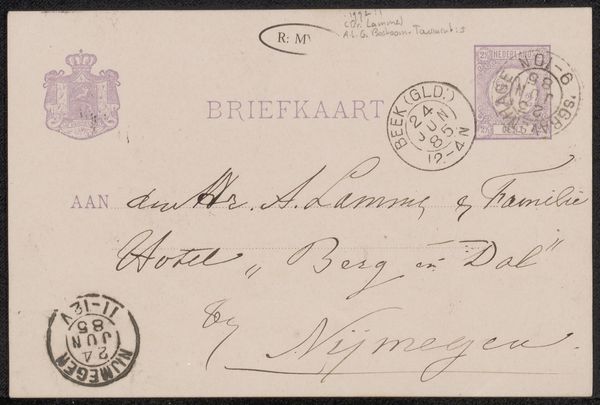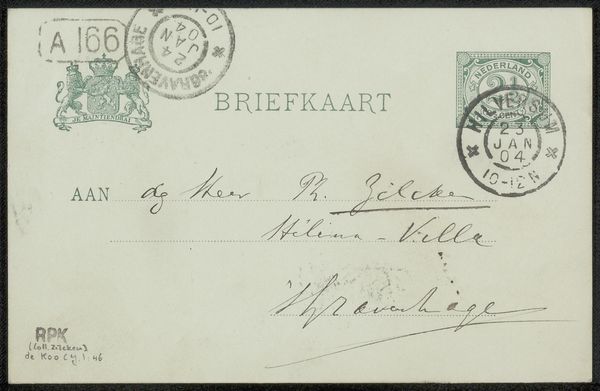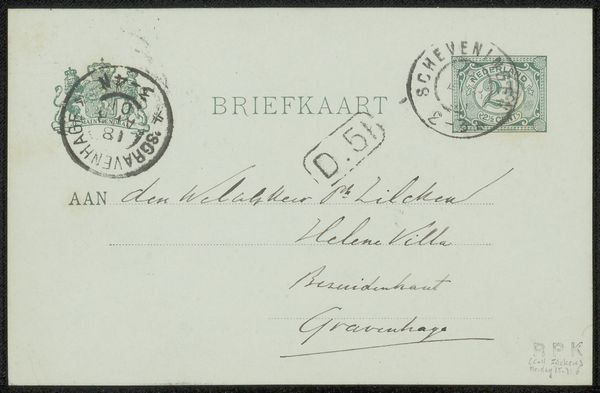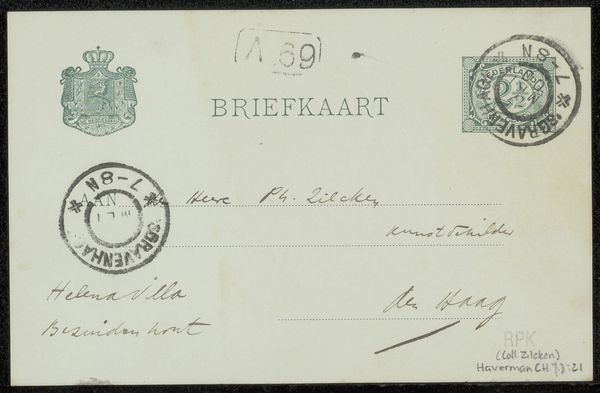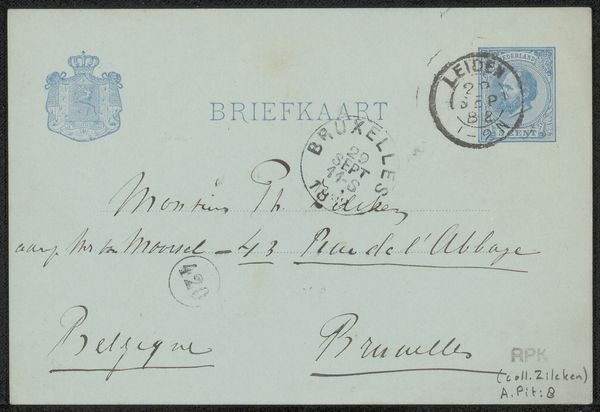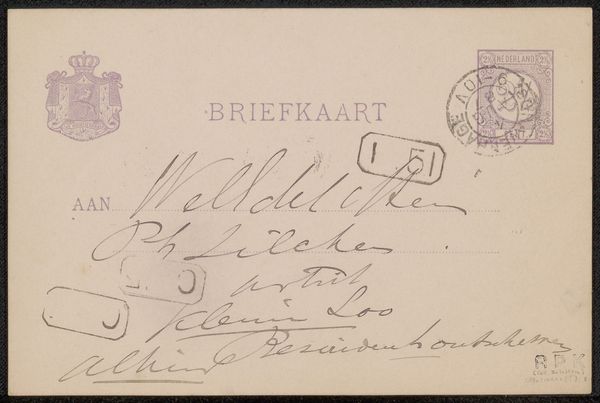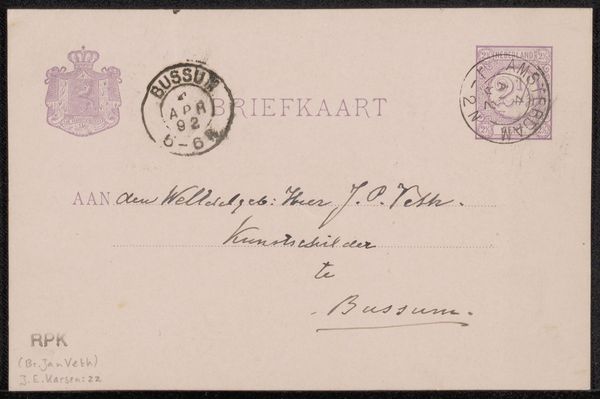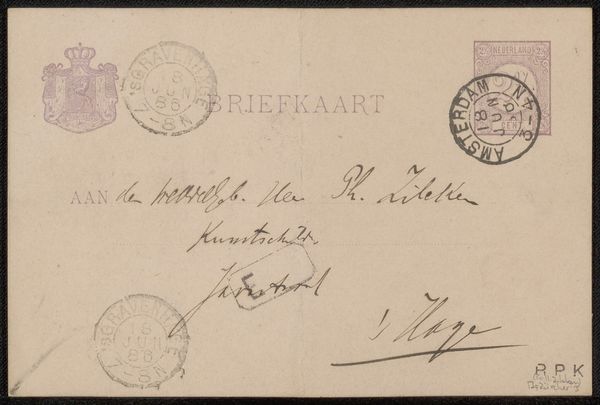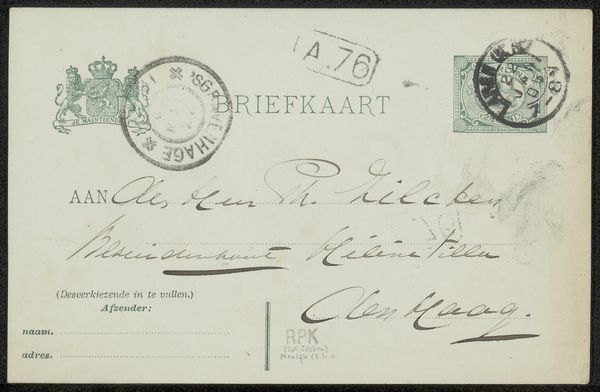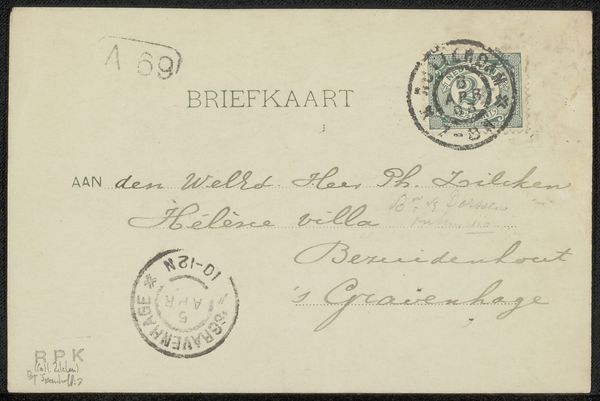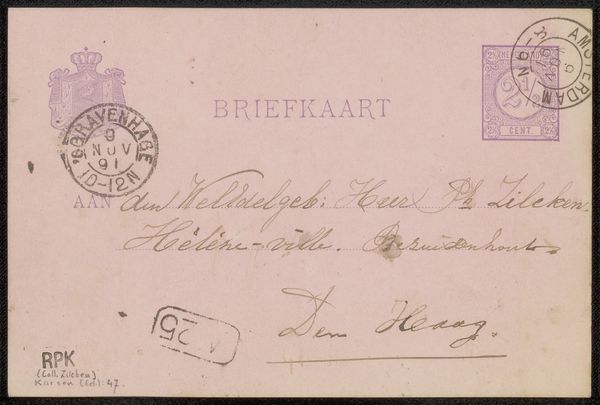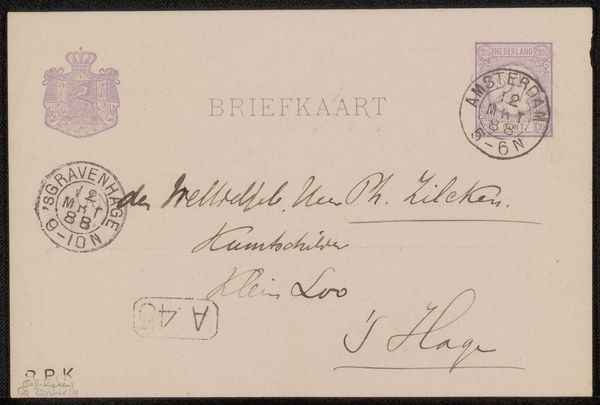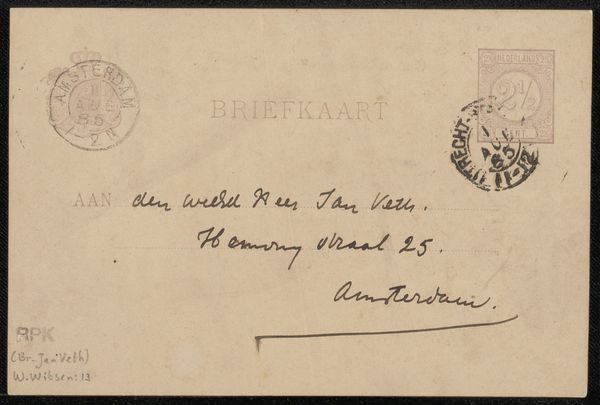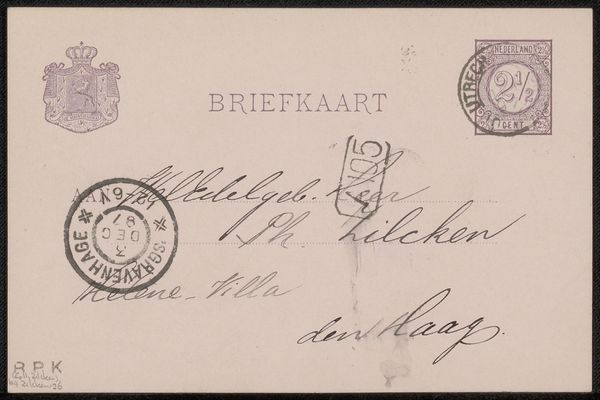
drawing, ink, pen
#
drawing
#
pen sketch
#
hand drawn type
#
personal sketchbook
#
ink
#
ink drawing experimentation
#
pen-ink sketch
#
pen work
#
sketchbook drawing
#
pen
#
watercolour illustration
#
storyboard and sketchbook work
#
sketchbook art
Copyright: Rijks Museum: Open Domain
Editor: Here we have Theo van Hoytema's "Briefkaart aan Philip Zilcken," likely created between 1901 and 1907. It’s an ink and pen drawing on what appears to be a postcard, held at the Rijksmuseum. What strikes me is the casual nature of it - it feels very intimate, like a glimpse into a private communication. What do you see in this piece? Curator: I see a powerful testament to the ways in which everyday communication can be a radical act. Consider the social context: early 20th century Netherlands. How might the act of corresponding, of maintaining connections, have been a quiet form of resistance or self-expression for Hoytema and Zilcken, perhaps navigating the constraints of their social circles? Does this card open to challenge norms of gender, class or social convention, perhaps through coded language or shared understandings accessible only to the sender and receiver? Editor: That’s fascinating, I hadn't considered it as an act of resistance. So, you're suggesting that the very act of sending this postcard could be interpreted as a statement? Curator: Exactly! The choice to use a postcard, a public form of communication, while embedding potentially private or subversive messages is very telling. How might the seemingly mundane details, such as the handwriting style or the stamps used, reinforce or challenge prevailing social norms? The interplay between public and private space. That's also something we should address, when observing such postcards. What statement is being made by choosing such medium? Editor: So, it's about looking beyond the surface and considering the potential social and political undertones embedded within this everyday object? Curator: Precisely! Think about it in terms of power dynamics: who has the right to communicate, who is heard, and what forms of communication are valued? This postcard then becomes a tangible artifact of a specific historical moment, reflecting broader social and political currents. Editor: That definitely gives me a new perspective on what might otherwise be dismissed as a simple correspondence. Curator: It prompts us to reconsider the subtle yet potent ways in which marginalized voices can assert themselves.
Comments
No comments
Be the first to comment and join the conversation on the ultimate creative platform.
